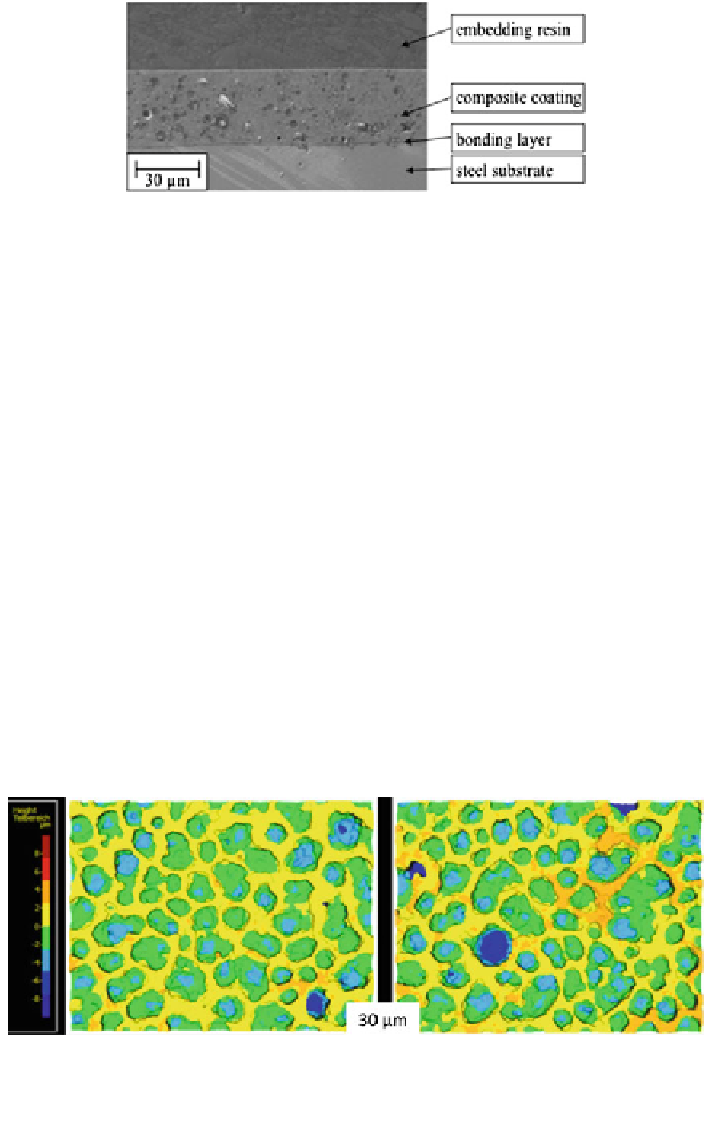Environmental Engineering Reference
In-Depth Information
Fig. 14 Silazane/ZrO
2
/glass composite coating system on mild steel 13CrMo4, pyrolyzed at
800
°
C in air
tests at the same temperature to simulate its use in a waste incineration plant (Sch
tz
et al.
2012
). After thermal cycling, no cracks or spallation were detected, which can
be attributed to the similar CTE values. The closed porosity was shown to have a
positive in
ü
uence on the adhesion of the coating during thermal cycling because it
limits the Young
fl
'
s modulus of the layer.
2.2.3 Control of Surface Area by Demixing and Dewetting Transitions
The coating process of substrate materials itself can be used to control the coating
structure. In a recent contribution (Stern et al.
2009
), two preceramic polymers were
mixed with SiC
fillers and the rheological properties were adapted to carry out a
coating process as described in Sect.
2.2.2
. After drying, a netlike structure was
observed, which remains intact even after pyrolysis in argon or in nitrogen. An
example of the structure of such a coating is shown in Fig.
15
.
A similar structure was also found in another study, where a different preceramic
polymer system and Si
3
N
4
fillers were used for the dip coating process (Kappa et al.
Fig. 15 Confocal microscope image of a PDC-coated alumina tape after cross-linking at 110
°
C
(left) and after pyrolysis at 1,100
°
C in argon (right); height of the cell walls color-coded; scale:
±
m (courtesy of A. Laskowsky, Institute of Materials and Joining Technology, Otto-von-
Guericke-University, Magdeburg)
10
ʼ

Search WWH ::

Custom Search